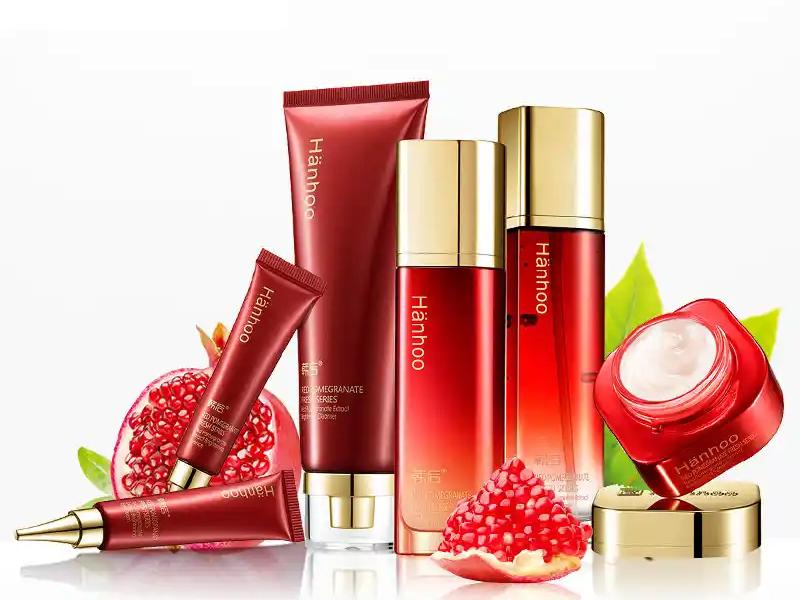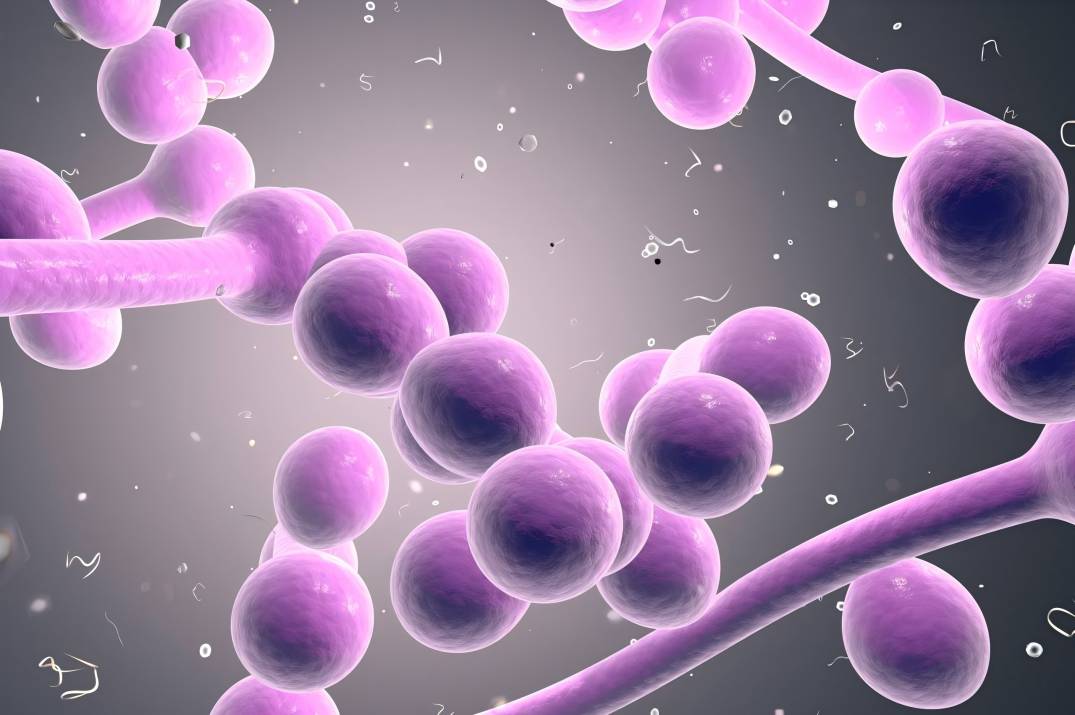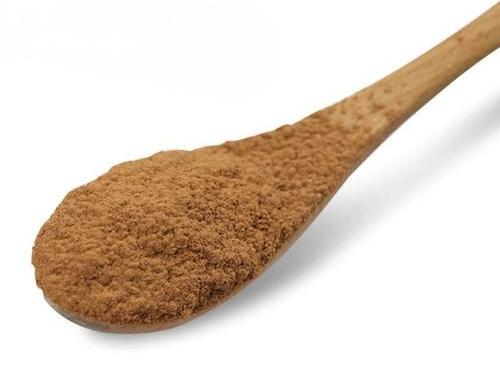What Is the Antibacterial Benefit of Pomegranate Peel in Hindi?
Pomegranate (Punica Granatum Linne) is a genus of durian in the family of Punicaceae, native to Central Asia. At present, China has abundant pomegranate resources, which are mainly distributed in Xinjiang, Shanxi, Shandong, Anhui, Sichuan, Yunnan and other places[1] . Pomegranate fruit has high nutritional value and good health benefits, such as antioxidant, antibacterial, antiviral, anti-inflammatory, antitumor, anticancer, anti-heart, cerebral and vascular diseases, and immunomodulatory effects, etc.[2] . Pomegranate peel accounts for about 20%-30% of the total weight of the fruit [3], and is highly valued in the fields of food and medicine due to the presence of a variety of functional and active components.
The Chinese Pharmacopoeia[4] recorded that the skin of durian is acidic, warm and astringent in nature, and has the functions of astringing the intestines to stop diarrhea, stopping bleeding, and expelling worms. In folklore, it is often used to treat diseases such as dysentery, diarrhea, ulcers, acid poisoning, bleeding, and parasitic infections[5] . Modern in vitro studies[6] preliminarily proved that extracts of pomegranate skin have the effect of inhibiting a variety of pathogenic microorganisms. In actual production, durian peel is often discarded as scrap material of pomegranate processing industry, but if it is developed and utilized, the added value of pomegranate products can be greatly increased. This article is intended to summarize the main components, bacteriostatic effect and mechanism of pomegranate peel and the latest research progress in the application of pomegranate peel in the field of preservation and preservation of food, with a view to providing references for the development and utilization of pomegranate peel resources.
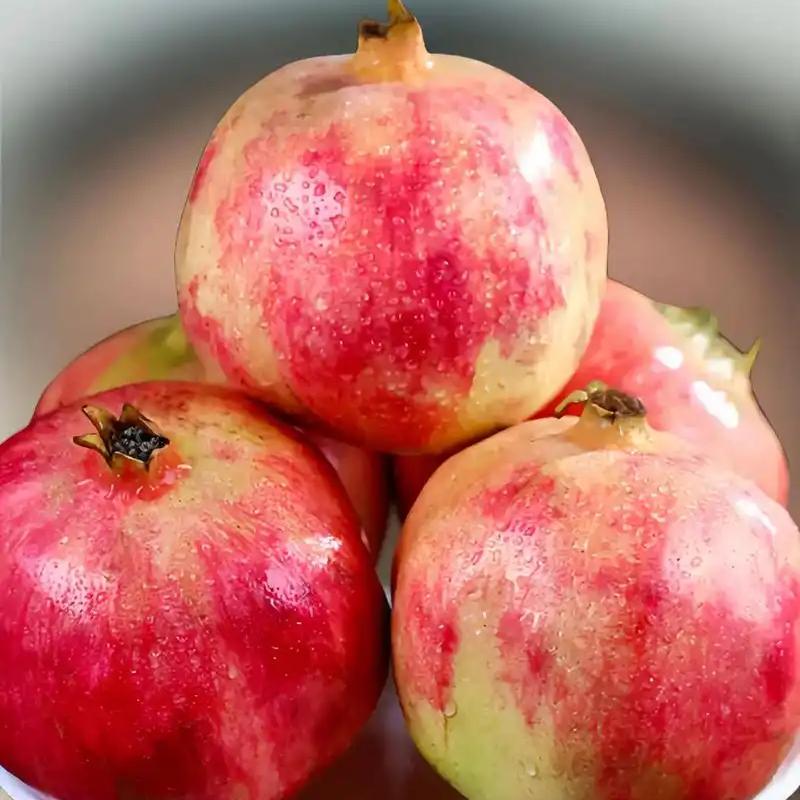
1 Main components of pomegranate peel
Pomegranate peel is rich in bioactive compounds, mainly including tannins, flavonoids, alkaloids and organic acids. Tannins, also known as tannins, are generally categorized into three types: hydrolyzed tannins, condensed tannins, and combination tannins. Tannins in grenadine skin have a high content, mainly hydrolyzed tannins, and include andrographolide, andrographidine, gallic acid, pomegranate peltin A, pomegranate peltin B, ellagitannin, galloyl bilactone, xylitannin, quercetin, tremellin I, ellagic acid, ellagic acid, ellagic acid rhamnoside (1 → 4) pyrano-glucoside, 2,3-(S)-hexahydroxybiphenyl dicarbonyl-D-glucose, etc.[1]. -glucose, etc.[7] . Flavonoids are derivatives of chromones or chromanes, with the C6-C3-C6 structure as the basic nucleus. Flavonoids in pomegranate rind are mainly anthocyanins, including aspalathin, delphinidin, cornflower and their derivatives, and flavanols (e.g., catechin, epicatechin) and flavonol compounds (e.g., quercetin)[8] . Alkaloids are nitrogenous alkaline organic compounds found in nature. The alkaloids in grenadine peel are mainly piperidine compounds, including grenadine, N-methylgrenadine, N-acetylgrenadine, pseudo-grenadine, 2-(2'-hydroxypropyl)-Δ1-piperidine and so on[9] . The content of organic acids is high in the juice of pomegranate, and some organic acids, such as ursolic acid and zearalic acid, are also present in the pomegranate peel[10] . Pomegranate peel is also rich in amino acids, with glutamic acid being the most abundant, followed by aspartic acid[11] . In addition, pomegranate peel contains minerals such as K, Ca, P, Mg and Na[12] .
2 Bacteriostatic effects of pomegranate peel extract
2.1 Inhibitory effect on bacteria
Pomegranate peel extracthttps://www.greenspringnatural.com/pomegranate-peel-extract-ellagic-acid-powder.html has a broad spectrum of antimicrobial activity, inhibiting a number of disease-causing and decaying microorganisms such as Staphylococcus aureus, Listeria monocytogenes, Clostridium perfringens, Escherichia coli, Salmonella spp. and Pseudomonas aeruginosa (Table 1).
Differences in pomegranate varieties, origins, ripening periods, extraction methods, bacterial inhibition methods and bacterial subtypes all affected the bacterial inhibition of pomegranate skins. As shown in Table 1, the solvents commonly used for pomegranate peel extracts are ethanol, methanol, acetone and water, and the commonly used bacteriostatic methods are diffusion (filter paper slice method, tube disc method, agar perforation method) and dilution (solid dilution method, liquid dilution method).Al-Zoreky[6] obtained pomegranate peel ethyl ether, 80% methanol, and aqueous extracts by the conventional maceration method, and the highest polyphenol content (262.5.5) was obtained from 80% methanol. The 80% methanol extract had the highest polyphenol content (262.5 mg/g) and the best bacterial inhibitory activity against Listeria monocytogenes, Staphylococcus aureus, Bacillus subtilis, Klebsiella pneumoniae, Escherichia coli, Salmonella enteritidis, and Serratia marcescens, with minimum inhibitory concentrations (MICs) ranging from 0.25 to 4.00mg/mL.
Moorthy et al. [13] used a Soxhlet extraction device to extract functional compounds from durian peel with 75% ethanol, and tested their bacterial activity against 19 species of bacteria by paper diffusion and broth dilution, and their ethanol extracts showed significant bacterial inhibition of the tested microorganisms, with MICs of 0.512 mg/mL for Staphylococcus epidermidis and S. cerevisiae, 0.512 mg/mL for Staphylococcus aureus, Staphylococcus variabilis, and 0.512 mg/mL for S. cerevisiae. The MIC for Staphylococcus epidermidis and S. enterocolitica Yersiniae was 0.512 mg/mL and for Staphylococcus aureus, Streptococcus mutans, Salmonella paratyphi A, Salmonella typhimurium, Pseudomonas aeruginosa, and Burkholderia cepacia onionis was 1.024 mg/mL. Fawole et al [14] investigated the bacteriostatic effect of peel extracts of seven pomegranate species against gram-positive (Bacillus subtilis ATCC 6051, Staphylococcus aureus ATCC 12600) and gram-negative (Enterobacteriaceae ATCC 11775, Klebsiella pneumophila ATCC 13883) bacteria, and the results showed that 80% methanolic extracts of pomegranate peels of different pomegranate species were effective against all four bacterial species, including S. paratyphi, Salmonella typhimurium, P. aeruginosa and Burkholderia onionis. The results showed that the methanol extract of 80% of different species of durian fruit peel showed strong inhibition of the four bacteria, with MICs ranging from 0.20 to 0.78 mg/mL, while the aqueous extract showed poorer inhibition, with MICs >12.50 mg/mL.
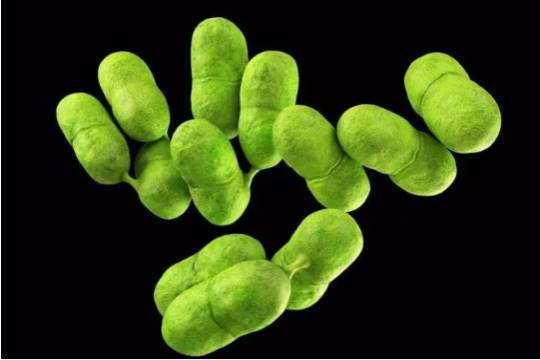
Ismail et al. [17] found that durian peel extract had strong inhibitory effects on Bacillus subtilis ATCC 6633, E. coli ATCC 25922, Staphylococcus aureus ATCC 25923, Pseudomonas aeruginosa ATCC 27853, Salmonella typhimurium ATCC 14028, with MICs ranging from 0.25-1.30 mg/mL, and the inhibitory effects were related to the total phenolic content of the extract. The MIC was 0.25~1.30 mg/mL, and the inhibitory effect was positively correlated with the total phenolic content of the extract. Choi et al. [20] boiled pomegranate peel powder in ethanol for 3h to obtain the ethanol extract of pomegranate peel, and the MICs of the extract against 16 strains of Salmonella typhimurium ranged from 0.0625 to 1.0000 mg/mL. In addition, the pomegranate peel extract had a significant effect on the mortality of mice and the viable counts of S. Typhimurium recovered from feces. High performance liquid chromatography (HPLC) showed the presence of andrographidine isomers, ellagic acid and gallic acid in the extract, which were inferred to be the main antimicrobial agents.
The pomegranate peel extract not only inhibited the growth of various bacteria, but also inhibited the formation of bacterial biofilm and the expression of virulence factors. Bakkiyaraj et al [15] found that the MIC of grenadine peel methanol extract against Staphylococcus aureus ATCC 11632, methicillin-resistant Staphylococcus aureus ATCC 33591 and Enterococcus faecalis ATCC 10536 was 0.25 mg/mL, which significantly inhibited the biofilm formation at a concentration lower than the MIC, and also had the effect of clearing the formed organisms. It also has the effect of removing the formed organisms.
Li et al. [21] studied the inhibitory effect of andrographolide, an important constituent of pomegranate rind, on Salmonella spp. The MIC of andrographolide ranged from 0.25 to 1.00 mg/mL, and at sub-inhibitory concentrations, andrographolide inhibited bacterial swimming and grouping by suppressing the expression of motility-related genes, and it had the effects of antisocial sensory and inhibition of bacterial invasion on HT29 cells.Xu et al. [22] showed that tannins of pomegranate rind were inhibited in a dose-dependent manner and had the effect of inhibition on the formation of biofilms. Xu et al.[22] showed that pomegranate peel tannins significantly reduced the adhesion and invasion of Listeria monocytogenes to Caco-2 cells in a dose-dependent manner, and when Listeria monocytogenes was grown in medium containing 2.5 mg/mL of pomegranate peel tannins, the transcript levels of prfA, inlA, and hly genes were reduced by 17-, 34-, and 28-fold, respectively. Yang et al.[23] found that the extract of pomegranate peel had the ability to inhibit the growth and invasion of HT29 cells, and that it had the ability to inhibit group sensation and inhibit the invasion of HT29 cells. Yang et al. [23] found that pomegranate peel extract inhibited bacterial group sensing and inhibited the formation and motility of E. coli biofilm, and the transcriptional analysis showed that pomegranate peel tannins inhibited the expression of bacterial hairs and various motility-related genes.
Xu et al.[16] found that andrographolide increased the concentration of extracellular potassium ions in Staphylococcus aureus, and it was observed by scanning electron microscopy that andrographolide bound to the surface of the bacterium and damaged the cellular morphology.Li et al.[19] investigated the inhibitory mechanism of pomegranate pericarp tannins (containing 64.2% of andrographolide and 3.1% ellagic acid) against Listeria monocytogenes and found that the inhibitory mechanism of tannins after pomegranate pericarp tannins was similar to that of the blank control, with the result that the inhibition of tannins by pomegranate pericarp tannins was much more effective than the blank control.
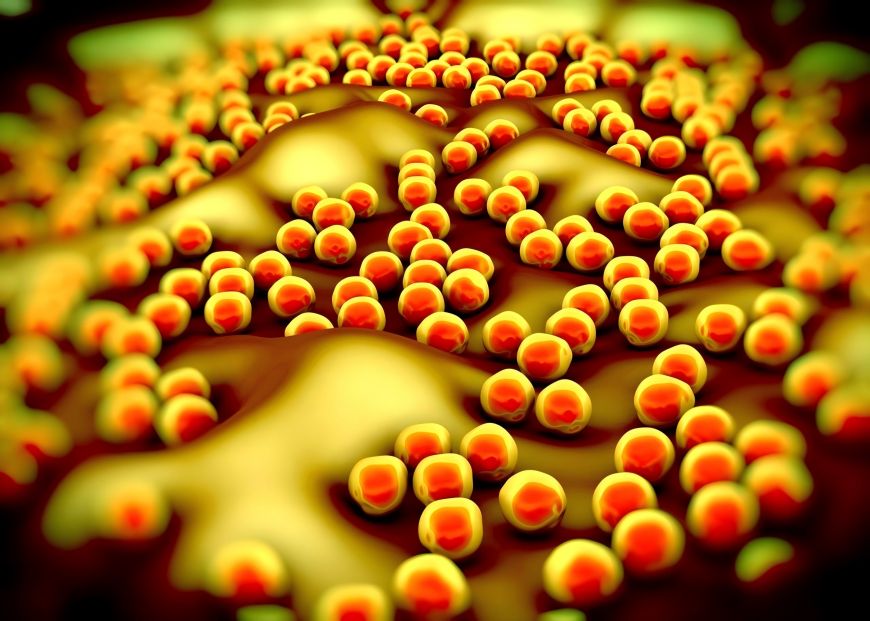
Compared with the blank control, the intracellular adenosine triphosphate (ATP) concentration of Listeria monocytogenes treated with pomegranate peel tannins (5, 10 mg/mL) decreased, the extracellular potassium and ATP concentration increased, the extracellular pH decreased, and the cellular membrane was hyperpolarized, which indicated that the pomegranate peel tannins could lead to the loss of Listeria monocytogenes intracellular homeostasis and the injury of the cell membrane structure. Polyphenols inhibit the growth of microorganisms by destroying the integrity of the cell wall and the permeability of the cell membrane, leading to the leakage of intracellular components, causing disorders of the membrane potential, and dysfunctions in energy metabolism and nucleotide synthesis[24] .
2.2 Inhibitory effect on fungi
Pomegranate peel extracts have shown strong antimicrobial activity against a variety of fungi. Endo et al[25] purified andrographolide from pomegranate rind, which showed significant antifungal activity against Candida albicans and Candida near-smooth, with minimum inhibitory concentrations of 3.9 and 1.9 μg/mL, respectively.Tayel et al[26] showed that compared with standard fungicides (miconazole, terbinafine, and tioconazole), the methanolic extract of pomegranate rind showed strong antimiralizing activity, and the inhibitory effect on Candida albicans was also strong, with the inhibition of C. albicans. The diameter of Candida albicans was 18.3 mm, while that of Candida albicans was 15.9 and 14.8 mm for ethanol and aqueous extracts, respectively.
Tehranifar et al.[27] investigated the inhibitory effects of aqueous and methanolic extracts of different parts of pomegranate (skin, seeds and leaves) on three postharvest fungi (Penicillium citriodora, Rootstrawberry and Gray mycorrhizal fungi), and the results showed that the methanolic extract was effective against the filamentous fungal organisms (Penicillium citriodora, Rhizopus stolonifer and Mycobacterium sp.). The results showed that the methanol extracts were better than the aqueous extracts in inhibiting the growth of mycelium and spore initiation, and the peel and seed extracts were more potent than the leaf extracts, which contained higher levels of polyphenolic compounds that contributed to the antifungal effect of the extracts.
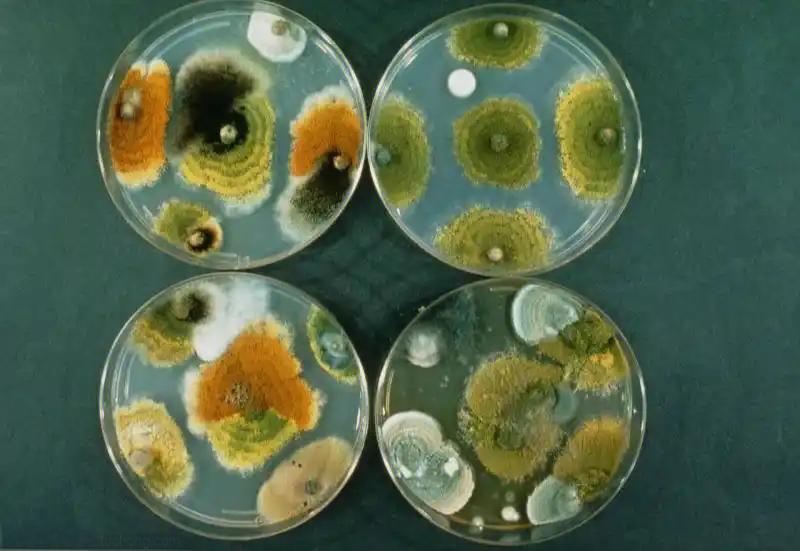
Glazer et al [28] found that the aqueous extract of pomegranate peel had significant inhibitory effect on the growth of decay fungi (e.g. Streptomyces, Streptomyces, Fusarium spp.), and its antimicrobial activity was strongly correlated with the amount of total polyphenols in the extract, with amphidin being the major ellagitannins responsible for the antifungal effect. Foss et al. [29] found that the hydroalcoholic extract of pomegranate peel inhibited dermatophytes such as Trichophyton mentagrophytes ATCC 1481, Trichophyton rubrum ATCC 28189, Trichophyton caninum ATCC 32903, and Trichophyton gypsophila ATCC 14683, with MICs of 0.125 and 0.250 mg/mL for the two genera, respectively. The MICs of the two genera were 0.125 and 0.250 mg/mL, respectively. Spectroscopic analysis showed that andrographolide was the main active substance, and the crude extract and andrographolide had an inhibitory effect on the spore germination and mycelial growth stages of the fungus.
3 Applications of Pomegranate Peel Extract
3.1 Application in the field of food antiseptic and freshness preservation
Pomegranate peel extract is rich in biologically active substances and has the advantages of strong bacterial inhibition activity and wide spectrum of bacterial inhibition, which can be used as a kind of potential natural bacterial inhibition material. In recent years, there has been an increasing number of studies on the application of grenadine peel in the field of preservation and conservation of food. Kanatt et al[30] found that grenadine peel extract could extend the shelf life of frozen chicken by inhibiting lipid oxygenation and the growth of some food spoilage bacteria. Dong Zhouyong et al.[31] found that durian peel extract had good freshness preservation effect on chilled pork, among which 1% extract concentration had the best freshness preservation effect, which was better than 500IU/g Nisin and other treatments. Shan et al[32] found that the ethanol extract of pomegranate rind significantly inhibited the growth of Listeria monocytogenes ATCC BAA-839, Staphylococcus aureus ATCC 13565, and Salmonella spp. ATCC 13311, as well as inhibited the lipoxylation of the cheese during the storage period of 9d, which has the potential to be a preservative for natural food.
Tayel et al [18] found that the MICs of 70% ethanol extract of durian peel against S. Typhimurium ATCC 13311 and S. aureus ATCC 700788 were 0.25 and 0.20 mg/mL, respectively. Adding ethanol extract of durian peel to steak can significantly inhibit the growth of S. Typhimurium and S. aureus, and the use of 2 MICs is not only good but also can keep the steak in the desired condition. Tayel et al [33] found that the addition of durum peel extract to minced beef completely prevented the growth of Salmonella typhimurium and preserved the overall quality and organoleptic properties of beef during storage. Hayrapetyan et al [34] inoculated 3.5 lg (CFU/g) of Listeria monocytogenes in meat paste and incubated at 4 ℃ for 46 d. The Listeria monocytogenes count in the group supplemented with 7.5% pomegranate peel extract increased to 5.0 lg (CFU/g), which was significantly lower than that of the control group [9.2 lg (CFU/g)]. Yuan et al[35] showed that the combination of chitosan coating and pomegranate peel extract could inhibit the melanosis and color change of Pacific white shrimp and improve its sensory quality, hardness and elasticity, as well as inhibit the increase of pH, volatile saline nitrogen content and total bacterial counts in Pacific white shrimp.
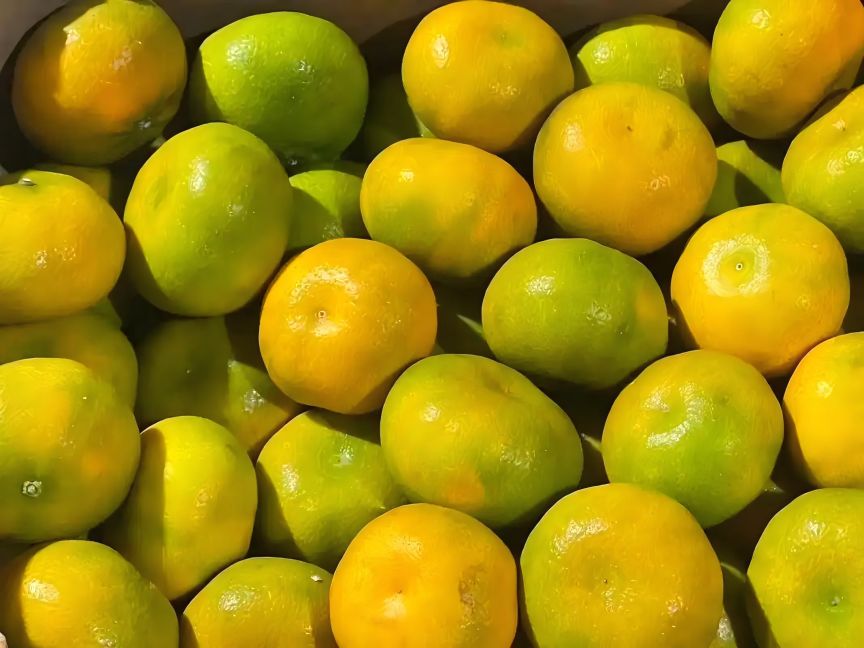
Pomegranate peel extract is also effective in preserving fruits and vegetables. Zhang Lihua et al[36] treated fresh strawberries with a composite edible film preservative made of 1.25% chitosan and 1% pomegranate peel extract, which could significantly slow down the degradation of ascorbic acid, soluble solids, and titratable acid in the fruits, and also slow down the formation of malondialdehyde, reduce the loss of water, reduce the softening decay rate, and extend the freshness period of strawberries by 1~2d at room temperature. Shi Yazhong et al[37] found that the extract of pomegranate peel from Huaiyuan had good preservation effect on cucumber, and the 1% pomegranate peel water extract was better than 1.25% chitosan solution and 0.5% calcium lactate solution in terms of loss of cucumber quality, softening and rotting, as well as changes in the content of vitamin C and malondialdehyde.
Li et al. [38] demonstrated that pomegranate peel extract treatment is a safe and effective method for the control of postharvest fungal rots of citrus fruits and sweet cherry. 1.2 mg/mL of pomegranate peel extract treated lemons completely prevented rots caused by Penicillium indicum and Penicillium citriodis from artificial inoculation. 2.4 mg/mL of pomegranate peel extract treated lemons under semi-commercial conditions reduced total rots by 73.5%. Under semi-commercial conditions, treatment with 2.4 mg/mL of pomegranate peel extract reduced the total decay rate of lemons by 73.5% and that of Moreau and Giorgia sweet cherries by 28.0% and 37.9%, respectively.
Nair et al. [39] showed that chitosan and alginate coating films enriched with pomegranate peel extracts could preserve the whole quality of hot peppers under refrigeration, which not only reduced the changes in weight, hardness, color, ascorbic acid, and total chlorophyll content of the samples, but also inhibited microbial growth, maintained high sensory ratings, and prolonged the shelf-life of the samples up to 25d at 10°C. Rongai et al. [40] found that pomegranate slices had a higher total decay rate of 73%, and the decay rate of Moreau and Giorgia sweet cherries was reduced by 28% and 37%, respectively. 40] found that the aqueous extract of pomegranate peel had an inhibitory effect on the growth of gray mold mycelium, and could prolong the shelf life of strawberry. Computational chemical methods demonstrated that andrographidine, the main component of pomegranate peel, had similar molecular interactions with the antifungal drug amphotericin B, which might be related to its ability to form pore-like aggregates.
3.2 Applications in other fields
Pomegranate peel extract not only has a broad application prospect in the field of food preservation, but also in the fields of medicine, textile, wood processing, etc. Hayouni et al. Hayouni et al[41] applied 5% durian dermal methanol extract on the skin wound of guinea pigs for 12d, which could significantly promote wound healing; the extract was effective against the tested wound pathogens, such as Pseudomonas aeruginosa ATCC 9027, Staphylococcus aureus ATCC 25923, Escherichia coli ATCC 25922, Klebsiella pneumoniae, Salmonella, Salmonella, and Salmonella typhimurium, etc. The extract was also useful in the prevention and preservation of foodstuffs. Klebsiella pneumoniae, Salmonella duckii, Salmonella typhimurium, Streptococcus pneumoniae, Candida albicans, Candida glabrata, Trichophyton rubrum and Aspergillus. Durian peel is the main ingredient of Anaer Woman Cleansing Liquid, which is used to treat all kinds of bacterial, mycotic and trichomonas vaginitis. Zhou Huafeng et al[42] found that the use of ginseng gel in combination with Arnall's cleansing liquid was effective in the treatment of trichomonas vaginitis.
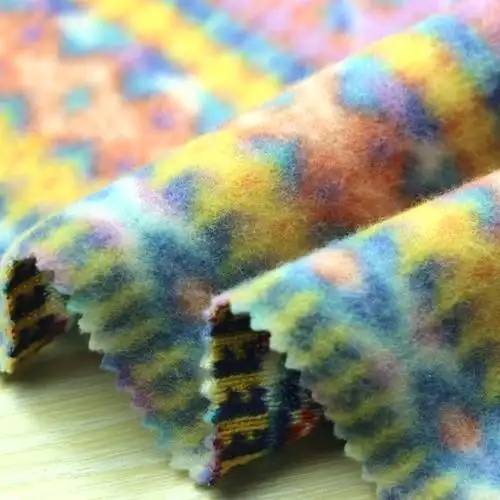
Ghaheh et al [43] found that durian peel extract-colored wool fabrics did not have long-lasting antimicrobial activity after washing and exposure to light, but when metallic salts were used as mordant, strong antimicrobial activity was retained even after 5 washes or exposure to light for 300 min. Lee et al [44] found that grenadine water extract colored cotton, silk and wool fabrics showed excellent antimicrobial activity (99.9% inhibition) against Staphylococcus aureus ATCC6538 and Klebsiella pneumoniae ATCC 4352. Hong Hao Yue et al[45] found that when pomegranate peel dye was used for silk dyeing, the fabrics had good color fastness to soap washing and rubbing, and inhibited Staphylococcus aureus and Escherichia coli to a certain extent.
Lajnef et al.[46] showed that samples impregnated with pomegranate peel extract were resistant to fungal attack, improved the biological resistance of wood, and reduced the weight loss of wood, thus prolonging the durability of wood.
4 Conclusion
The use of pomegranate processing waste material, durum peel, as a raw material for polyphenolic substance extraction can turn waste into treasure and improve the comprehensive utilization value of pomegranate. In the future, we should study the polyphenol bioactive components of pomegranate peel and their functioning mechanism more deeply, accelerate the research on the large-scale purification of the effective components in pomegranate peel, and believe that pomegranate peel will be better for the benefit of mankind with the deepening of the research.
Reference
[1] Xie L , Tian L . Research progress of anti-tumor active components of pomegranate[J] . Chinese Journal of Experimental Formulary, 2016 , 22(2) : 211-215.
[2] GUO Hairu, ZHU Fangjuan, LI Longgen, et al. Study on the chemical composition of durian peel[J] . Journal of Yunnan Agricultural University (Natural Science), 2019 , 34(2) : 362-369.
[3] Li Jianke, Li Guoxiu, Zhao Yanhong, et al. Analysis of polyphenol composition and antioxidant activity of pomegranate peel[J] . Chinese Agricultural Science, 2009 , 42(11) : 4 035-4 041.
[4] State Pharmacopoeia Commission. Pharmacopoeia of the People's Republic of China: a part[ M] . 2015 Edition . Beijing : China Pharmaceutical Science and Technology Press, 2015 : 93.
[5] Tang Li-Li, Zhang Peng. Research progress of pomegranate peel polyphenols[J] . Agricultural Products Processing (Journal), 2014(12) : 58-59 , 63.
[6] AL-ZOREKY N S. Antimicrobial activity of pomegranate (Punica granatum L. ) fruit p eels[J] . International Journal of Food Microbiology , 2009 , 134(3) : 244-248.
[7] SATOMI H , UMEMURA K , UENO A , et al. Carbonic an- hydrase inhibitors from the pericarps of Punica granatum L[J] . Biological and Pharmaceutical Bulletin , 1993 , 16 ( 8 ) : 787-790.
[8] SINGH B , SINGH J P , KAUR A , et al. Phenolic compounds as beneficial phytochemicals in pomegranate (Punica granatum L. ) p eel : A review[J] . Food Chemistry , 2018 , 261 : 75-86.
[9] Wang Rufeng , Xiang Lan , Du Lijun , et al. Chemical composition of pomegranate[J] . Asia-Pacific Traditional Medicine, 2006(3): 61-70.
[10] JENA KASMU, PALIDA ABLIZ, ZHANG Xiaoying, et al. Study on the chemical composition of pomegranate peel in Xinjiang[J] . Chinese Materia Medica, 2009 , 32(3) : 363-365.
[11] LIU Jia-Fu, ZHOU Jia-Qi. Analysis of the main components of pomegranate from Mengzi, Yunnan[J] . Yunnan Agricultural Science and Technology, 1995(6) : 17-18.
[12] MIRDEHGHAN S H , RAHEMI M. Seasonal changes of mineral nutrients and phenolics in pomegranate ( Punica granatum L. ) fruit[J] . Scientia Horticulturae , 2007 , 111 (2) : 120-127.
[13] MOORTHY K , PUNITHA T , VINODHINI R , et al. An- timicrobial activity and qualitative phytochemical analysis of Punica granatum Linn (PERICARP)[J] . Journal of Medic- inal Plant Research , 2013 , 7(9) : 474-479.
[14] FAWOLE O A , MAKUNGA N P , OPARA U L. Antibac- terial , antioxidant and tyrosinase-inhibition activities of pomegranate fruit p eel methanolic extract [J] . BMC Com- plementary and Alternative Medicine , 2012 , 12 : 1-11.
[15] BAKKIYARAJ D , NANDHINI J R , MALATHY B , et al. The anti-biofilm potential of pomegranate ( Punica granatum L. ) extract against human bacterial and fungal pathogens[J] . Biofouling , 2013 , 29(8) : 929-937.
[16] XU Yun-feng , SHI Chao , WU Qian , et al. Antimicrobial activity of punicalagin against Staphylococcus aureus and its effect on biofilm formation[J] . Foodborne Pathogens and Disease , 2017 , 14(5) : 282-287.
[17] ISMAIL T , AKHTAR S , SESTILI P , et al. Antioxidant , antimicrobial and urease inhibitory activities of phenolics- rich pomegranate p eel hydro-alcoholic extracts [J] . Journal of Food Biochemistry , 2016 , 40(4) : 550-558.
[18] TAYEL A A , EL-TRAS W F , MOUSSA S H , et al. Sur- face decontamination and quality enhancement in meat steaks using plant extracts as natural biop reservatives[J] . Foodborne Pathogens and Disease , 2012 , 9(8) : 755-761.
[19] LI Guang-hui , XU Yun-feng , WANG Xin , et al. Tannin- rich fraction from pomegranate rind damages membrane of Listeriamonocytogenes[J] . Foodborne Pathogens and Dis- ease , 2014 , 11(4) : 313-319.
[20] CHOI J G , KANG O H , LEE Y S , et al. In vitro and in vivo antibacterial activity of Punica granatum p eel ethanol extract against Salmonella[J] . Evidence-based Complemen- tary and Alternative Medicine , 2011 , DOI : 10. 1093/
ecam/nep105.
[21] LI Guang-hui , YAN Chun-hong , XU Yun-feng , et al. Pu- nicalagin inhibits Salmonella virulence factors and has anti- quorum-sensing potential[J] . Applied and Environmental Microbiology , 2014 , 80(19) : 6 204-6 211.
[22] XU Yun-feng , LI Guang-hui , ZHANG Bai-gang , et al. Tannin-rich pomegranate rind extracts reduce adhesion to and invasion of Caco-2Cells by Listeria monocytogenes and decrease its expression of virulence genes[J] . Journal of Food Protection , 2015 , 78(1) : 128-133.
[23] YANG Qin-nan , WU Qian , GAO Jian-xue , et al. Tannin- rich fraction from pomegranate rind inhibits quorum sensing in Chromobacterium violaceum and biofilm formation in Escherichia coli [J] . Foodborne Pathogens and Disease , 2015 , 13(1) : 28-35.
[24] Fei Peng, Zhao Shengjuan, Chen Xi, et al. Research progress on bacterial inhibitory activity, function mechanism and application of plant polyphenols[J] . Food and Machinery, 2019 , 35(7) : 226-230.
[25] ENDO E H , CORTEZ D A G , UEDA-NAKAMURA T , et al. Potent antifungal activity of extracts and pure compound isolated from pomegranate p eels and synergism with flucon- azole against Candidaalbicans[J] . Research in Microbiolo- gy , 2010 , 161(7) : 534-540.
[26] TAYEL A A , EL-TRAS W F. Anticandidal activity of pomegranate p eel extract aerosol as an applicable sanitizing method[J] . Mycoses , 2010 , 53(2) : 117-122.
[27] TEHRANIFAR A , SELAHVARZI Y , KHARRAZI M , et al. High potential of agro-industrial by-p roducts of pome- granate (Punica granatum L. ) as the powerful antifungal and antioxidant substances[J] . Industrial Crops and Prod- ucts , 2011 , 34(3) : 1 523-1 527.
[28] GLAZER I , MASAPHY S , MARCIANO P , et al. Partial identification of antifungal compounds from Punica granatum p eel extracts [J] . Journal of Agricultural and Food Chemistry , 2012 , 60(19) : 4 841-4 848.
[29] FOSS S R , NAKAMURA C V , UEDA-NAKAMURA T , et al. Antifungal activity of pomegranate p eel extract and i- solated compound punicalagin against dermatophytes [J] . Annals of Clinical Microbiology and Antimicrobials , 2014 , 13(32) : 1-6.
[30] KANATT S R , CHANDER R , SHARMA A. Antioxidant and antimicrobial activity of pomegranate peel extract improves the shelf life of chicken products[J] . International Journal of Food Science and Technology , 2010 , 45(2): 216-222.
[31] Dong Zhouyong, Liu Xinghua, Yang Dongxing, et al. Preservation effect of pomegranate pericarp extract on cooled pork[J] . Northwest Journal of Agriculture, 2011 , 20(8) : 48-52.
[32] SHAN B , CAI Y Z , BROOKS J D , et al. Potential applica- tion of spice and herb extracts as natural p reservatives in cheese[J] . Journal of Medicinal Food , 2011 , 14 ( 3 ) : 284-290.
[33] TAYEL A A , EL-TRAS W F. Plant extracts as potent bio- p reservatives for Salmonella Typhimurium control and quality enhancement in ground beef[J] . Journal of Food Safety , 2012 , 32 : 115-121.
[34] HAYRAPETYAN H , HAZELEGER W C , BEUMER R R. Inhibition of Listeria monocytogenes b y pomegranate (Punica granatum) p eel extract in meat patéat different temperatures[J] . Food Control , 2012 , 23(1) : 66-72.
[35] YUAN Gao-feng , LV Hua , TANG Wen-yan , et al. Effect of chitosan coating combined with pomegranatepeel extract on the quality of Pacific white shrimp during iced storage[J] . Food Control , 2016 , 59(1) : 818-823.
[36] ZHANG Lihua, ZHANG Yuanhu, CAO Hui, et al. Effect of pomegranate peel extract on freshness preservation of strawberry[J] . Journal of Agricultural Engineering, 2010 , 26(2) : 361-365.
[37] SHI Yazhong, WU Yahua, XU Hui, et al. Effect of Huaiyuan pomegranate peel extract on the freshness preservation of cucumber[J] . Food Industry Science and Technology, 2013 , 34(3) : 335-338.
[38] LI DESTRI NICOSIA M G , PANGALLO S , RAPHAEL G et al. Control of postharvest fungal rots on citrus fruit and sweet cherries using a pomegranate p eel extract [J] . Post- harvest Biology and Technology , 2016 , 114 : 54-61.
[39] NAIR M S , SAXENA A , KAUR C. Characterization and antifungal activity of pomegranate p eel extract and its use in polysaccharide-based edible coatings to extend the shelf-life of Capsicum ( Capsicum annuum L. ) [ J ] . Food and Bioprocess Technology , 2018 , 11(4) : 1 317-1 327.
[40] RONGAI D , SABATINI N , PULCINI P , et al. Effect of pomegranate p eel extract on shelf life of strawberries : Com- putational chemistry approaches to assess antifungal mecha- nisms involved [ J ] . Journal of Food Science and Technology , 2018 , 55(7) : 2 702-2 711.
[41] HAYOUNI E A , MILED K , BOUBAKER S , et al. Hydroal- coholic extract based-ointment from Punica granatum L. peels with enhanced in vivo healing potential on dermal wounds[J] . Phytomedicine InternationalJournal ofPhytotherapy andPhyto- pharmacology , 2011 , 18(11): 976-984.
[42] Zhou Huafeng, Shen Caihong. Clinical observation on the treatment of trichomonas vaginitis with bitter ginseng gel combined with Anar gynecological cleansing liquid[J] . New Chinese Medicine, 2015 , 47(3) : 154-155.
[43] GHAHEH F S , NATERI A S , MORTAZAYI S M , et al. The effect of mordant salts on antibacterial activity of wool fabric dyed with pomegranate and walnut shell extracts [J] . Coloration Technology , 2012 , 128 : 473-478.
[44] LEE Y H , HWANG E K , BAEK Y M , et al. Deodorizing and antibacterial p erformance of cotton , silk and wool fabrics dyed with Punica granatum L. extracts [J] . Fibers and Polymers , 2013 , 14(9) : 1 445-1 453.
[45] Hao-Yue Hong, Jun-Ling Ji, Dong-Fang Wang. Extraction of plant dyes from pomegranate peel and its pre-mordanting process on silk [J]. Printing and Dyeing Auxiliaries , 2017 , 34 (2) : 47-52.
[46] LAJNEF L , CACERES I , TRINSOUTROT P , et al. Effect of Punica granatum p eel and Melia azedarach bark extracts on durability of European beech and maritime pine[J] . European Journal of Wood and Wood Products , 2018 , 76 : 1 725-1 735.


 English
English French
French Spanish
Spanish Russian
Russian Korean
Korean Japanese
Japanese
